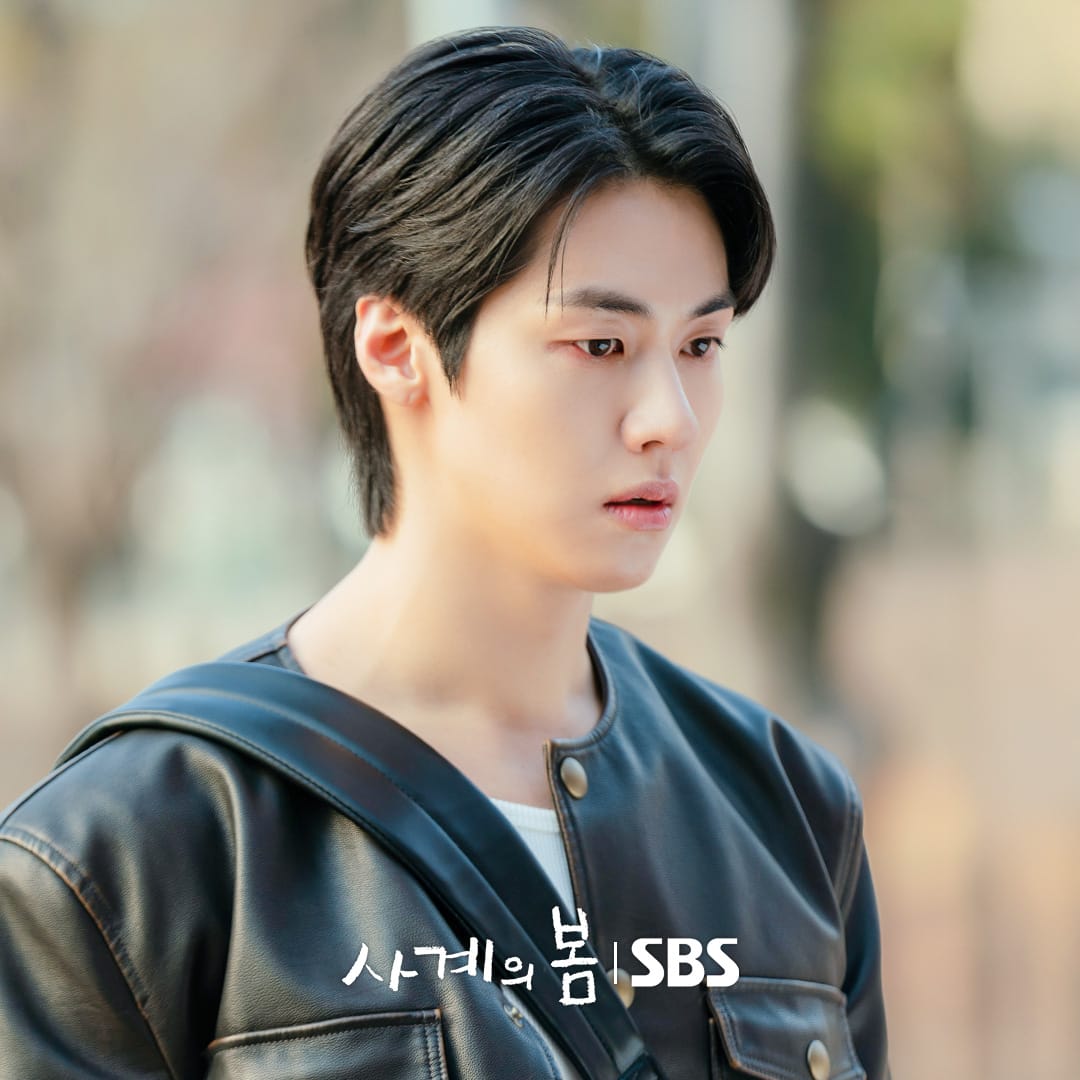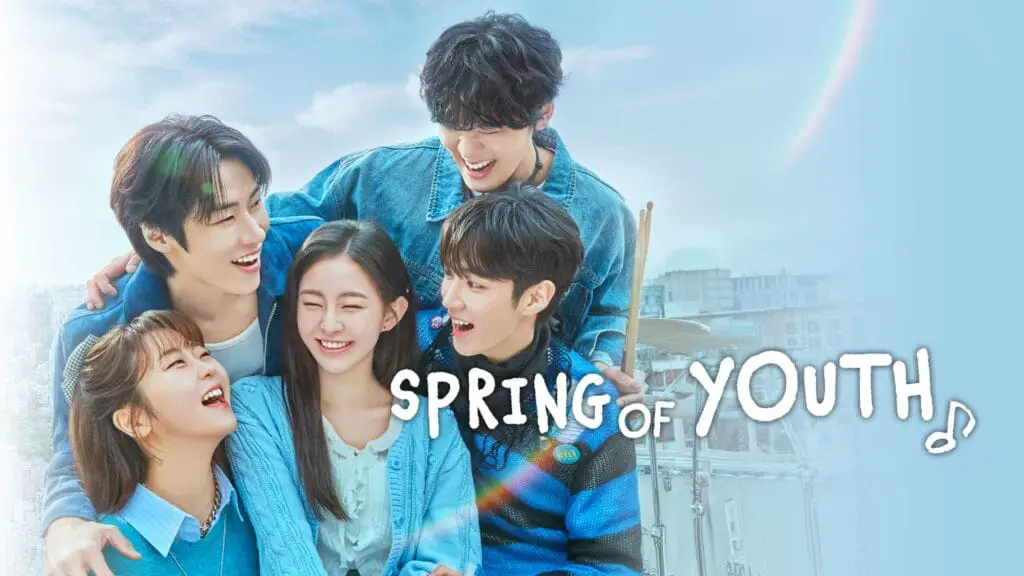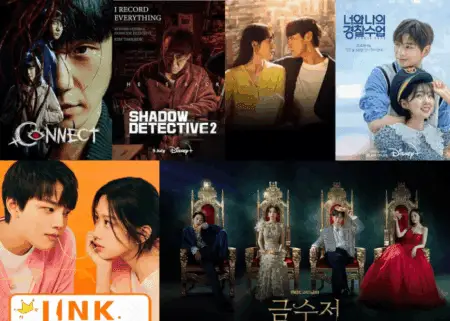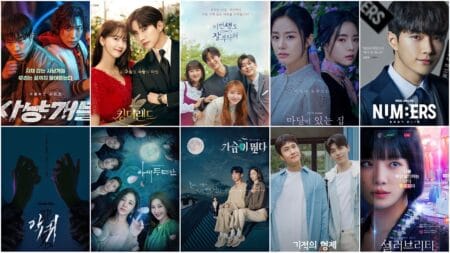🎬 Overview
Title: Spring of Youth (사계의 봄)
Episodes: 8
Genre: Youth romance, campus music drama
Airing Network: SBS
Streaming Platforms: Viki, Netflix
Director: Kim Sung-yong
Writer: Kim Min-cheol
Main Cast:
Ha Yoo-joon as Sa-gye
Park Ji-hu as Kim Bom
Lee Seung-hyub as Seo Tae-yang
Supporting: Jo Han-chul, Cha Chung-hwa, Seo Hye-won
🧭 Premise
Spring of Youth follows the story of Sa-gye, a former K-pop band frontman who falls from grace after a scandal. With his career on hold and public image shattered, he escapes to Hanju University to find some anonymity and healing. There, he meets Kim Bom, a musically gifted student dealing with her mother’s recent passing, and Seo Tae-yang, a medical student with a talent for guitar and a quietly brewing competitive streak.
Despite their different pasts and goals, the trio come together to form a campus band named Two Sa-gye, an homage to both the season (sagye, meaning “four seasons” in Korean) and Sa-gye’s identity. What begins as a therapeutic musical project slowly becomes a journey of healing, ambition, friendship, and love.
🎭 Characters & Performances
🔹 Sa-gye (Ha Yoo-joon)

A nuanced portrayal of a former idol navigating shame, self-worth, and the burden of past fame. Sa-gye is not just trying to disappear—he’s trying to find a reason to sing again. Ha Yoo-joon plays him with a reserved but smoldering sensitivity, echoing his own real-life background in the idol industry.
🔹 Kim Bom (Park Ji-hu)

Smart, independent, and quiet, Bom is a refreshing female lead. Her grief over her mother’s death is rendered with emotional restraint, which makes her slow burn of affection toward music—and Sa-gye—all the more touching. Park Ji-hu once again delivers with grace and warmth.
🔹 Seo Tae-yang (Lee Seung-hyub)

Tae-yang is the unexpected wildcard. Beneath his calm exterior lies a storm of expectations and inner rivalry—especially when Bom and Sa-gye begin to harmonize both musically and emotionally. Lee Seung-hyub, a real-life musician, brings authenticity to his performance and guitar scenes.
🔹 Supporting Cast
Professors, fellow bandmates, and campus figures bring color and humor. Jo Han-chul and Cha Chung-hwa offer some of the show’s comic relief and emotional grounding.
🎶 Music & Aesthetic
Music is the soul of this series. The jam sessions, acoustic busking, and impromptu rehearsals are not just filler—they’re the emotional and narrative heartbeat of the show. The drama features an original song (a “lost melody”) that ties the leads together, evolving across episodes with each performance. It symbolizes growth, grief, and recovery.
Aesthetically, Spring of Youth is vibrant and soft—bathed in warm golden light, with plenty of sweeping campus visuals: rooftops, cherry blossoms, guitar practice under trees, and late-night studio moments. The camera lingers on small gestures—a hand on piano keys, the wind in Bom’s hair, tears caught in the corners of eyes—inviting the viewer into the characters’ quiet turmoil and fleeting joys.
💡 Themes Explored
1. Healing through Music
Each of the main characters comes to music with different baggage—Sa-gye with shame, Bom with loss, Tae-yang with pressure. Music is their common language of healing.
2. Redemption
Sa-gye’s journey from disgraced idol to humble musician is at the heart of the story. His arc is about not reclaiming fame, but redefining worth.
3. Youth and Imperfection
The drama portrays university life not as a party or academic sprint, but as a time of mistakes, longing, uncertainty, and hope.
4. Grief and Memory
Kim Bom’s quiet mourning is a recurring motif. Through music, she learns not to forget her mother, but to carry her memory forward.
📉 Reception
Despite its aesthetic beauty and strong performances, Spring of Youth debuted to modest domestic ratings. The first episode opened around 1.4%, but ratings dipped below 1% by episode two. This underperformance could be attributed to competition in the midweek time slot or possibly its slow-burn pacing.
However, the show is resonating internationally, especially with fans in Southeast Asia and Latin America. Viewers abroad have praised its emotional depth, visual storytelling, and the chemistry of the leads. International streaming platforms rank it among the top 10 for currently airing K-dramas, even as its home audience remains lukewarm.
✅ Strengths
Authentic music integration: The show doesn’t just use music as a backdrop—it uses it to move the story forward.
Delicate performances: Park Ji-hu’s nuanced portrayal of Bom is especially worth noting.
Visually poetic: Each scene is well-composed, lending the series an almost cinematic quality.
Organic relationships: Friendships and romances develop naturally, without forced melodrama.
❌ Weaknesses
Pacing: The first two episodes are slower, focusing more on mood and character than plot. Some viewers might drop out before the story “picks up.”
Predictability: Familiar tropes—disgraced idol, healing campus romance, love triangle—can make the story feel safe, even if well-executed.
Supporting cast underused: Secondary characters sometimes feel underdeveloped or tokenistic, especially band members outside the main trio.
📺 Best Episodes
Episode 3: Sa-gye’s first real performance since his scandal—raw, vulnerable, and pivotal.
Episode 5: The rooftop jam session scene, where all three leads finally connect musically.
Episode 7: The confrontation between Tae-yang and Sa-gye, where underlying jealousy and friendship collide.
Episode 8: The final performance and the subtle, quiet conclusion that avoids unnecessary dramatics.
🎤 Final Thoughts
Spring of Youth is a quiet, heartfelt series. It doesn’t reinvent the genre, nor does it try to. What it offers instead is comfort, reflection, and understated beauty. In the sea of high-concept K-dramas and sensational plot twists, this series stands out as a soft ballad—a gentle reminder of youth’s fleeting pain and beauty.
If you enjoy:
Lovely Runner
Dream High
Do You Like Brahms?
Twenty-Five Twenty-One
…then Spring of Youth will likely strike a chord with you.
⭐ Rating: 8.3/10
Rewatchability: Medium-High
OST Quality: High
Ideal Audience: Viewers who prefer character-driven, emotional slow burns over high-octane drama







